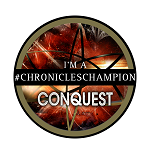
Today I am very happy to welcome D Nolan Clark to the site, talking about his writing process and creating aliens. Love this!
THE WRITER’S PROCESS: DESIGNING ALIEN SPECIES
by D. Nolan Clark
The writer who wants to invent an alien species faces a number of obstacles that require creative solutions. Aliens are by definition unlike anything found on Earth, and the writer needs to get that across. You can only get so far with blue cat aliens or Martians who look just like us except for a latex prosthetic on their foreheads. Aliens that satisfy readers and viewers, aliens that mean something, need to surprise or shock us with their differences from what we know. It can be a daunting task to create an alien species from scratch, but like all world-building it can also be fun and it can even open up your story, give it new dimensions you would never otherwise have considered.
I’d like to share my process for creating aliens. Obviously every writer has their own technique and this is hardly a definitive guide, but at the very least I hope it’ll spark some creativity.
My alien designs go through five main steps, each as important as the last. I tend to go through them in this order:
1) Concept: What role will the aliens play in your story? Are they violent aggressors or wise teachers? Are they a metaphor for people on Earth, or are they intended to evoke the strange and exotic? The concept of your aliens will shape the story in many ways. It may even become the crux of your tale. Do your aliens have three sexes, or seven, or none at all? Humans interacting with an asexual species could be the start of lots of interesting tales, and let a writer examine human sexuality from an outsider’s perspective—as an example. Your aliens don’t have to drive your story, but you still need to know why they’re there and how they’ll relate to your human characters.
2) Evolution: Assuming your aliens came from a planet of their own, what did that planet look like? How hot was it, how strong was the gravity? Every element you can imagine of the alien homeworld will have a massive effect on what your aliens look like now. If they evolved on a water world, they’re likely to have fins and maybe gills. If they come from a dry place they might have scales or nictitating membranes. Studying Earthly animals can be a great font of inspiration here, but make sure you don’t just lean on biology as we know it. Aliens that just look like bipedal buffalos aren’t nearly as interesting as creatures that evolved on a dark world and therefore have no eyes, but find their way around by echolocation. Knowing what senses your aliens possess will greatly shape how they perceive us. Details of their physiology will utterly define how we see them. How big are they? If they come from a high-gravity planet, they’re likely to be low to the ground and very strong by our standards, while aliens from a low-gravity environment will be frail and delicate when they come to Earth. Are they horrifyingly ugly, by human standards, or ethereally beautiful—or both?
3) Culture: Your aliens will have a rich history, a story of their own—a story that could include mistakes and brilliant successes, charismatic leaders and popular movements. History, art, the games they play—these are the things that define how your aliens live now. This is absolutely crucial to know. What aliens look like is almost less important than how their society works. This is also one of the great pitfalls of science fiction. It’s an old cliché that all aliens from a given planet dress alike, have the same form of government, enjoy a single form of art, etc. It’s a cliché because it works, to a degree—homogeneous aliens are a kind of shorthand, a way for a writer to get big ideas across without muddying the waters, but in the end they feel more like a force of nature than like people. Consider creating multiple religious sects, or simply having one of your aliens stand out because they’re famous among their people for being a terrible dresser, or for their unpopular political opinions. You can spend way too much time on designing alien art movements and changing tastes in music—stuff that may not make it into the final story at all, or that makes your aliens so chaotic that they might as well belong to multiple species (which could be an interesting story in itself, of course). But a little cultural differentiation can really make individual aliens pop. Think how few things all humans agree on—other species are likely to be the same, right? If they’re not, that’s a Concept in itself.
4) Psychology: Beyond what your aliens believe, how do they think? How is their thinking different from that of humans? Most humans value individual experience and freedom. Maybe your aliens have a hive mind. Conversely, humans are social animals, who like to live in close proximity to each other. Maybe your aliens evolved from solitary predators, and they live reclusive lives where they only get together to mate or to wage war. If you want to get really trippy with it, maybe your aliens experience time differently than we do, and can spend an entire week making breakfast, or they don’t recognize individual consciousness at all, and are so confused when they meet humans that they act like we’re invisible. Make it weird—but make sure it’s not so weird that your readers feel lost. Be able to think like your aliens, and to express their ideas as clearly as you express the thoughts and emotions of your human characters.
5) Technology: The previous four steps will likely determine the kind of machines and technologies your aliens use. Alternatively, this could be part of your high concept. How do your aliens relate to humans in terms of their overall development? Are their spaceships faster than ours, or invulnerable to attack, or are they incredibly slow, designed for creatures who think a hundred year journey is a quick joyride? Are your aliens still working on discovering fire, so that first contact with humans is likely to blow their minds? Or have they been tooling around the galaxy so long, and met so many other species, that they’ve seen our like before and aren’t terribly impressed? Technology is not the only factor that defines species, but it is the primary sphere where two species are likely to first interact. Imagine aliens showing up on the White House lawn tomorrow with force fields and the ability to teleport. Even if they claim to come in peace, we’re likely to be terrified of their destructive potential. We could also want very much to trade with them, to get fusion power or the cure for cancer—but what would we have to offer in exchange? On the other hand—maybe we’re at exactly the same level. Maybe our first starship meets their first starship halfway between here and Tau Ceti—what happens next? Do we compete for habitable worlds, or do we join forces to explore the unknown?
As you can probably see, if you want to create aliens you’ve got your work cut out for you. None of these steps is easy, and none of them should be done too quickly. Think of as many cool ideas as you can, right off the top of your head—but then give them time to marinate, to let the puzzle pieces interconnect, a process which can create whole new ideas. If you take some time and let yourself meditate on these factors, you may be astounded at how many story ideas just magically appear. A fascinating, well thought-out alien species is one of the great joys of science fiction. It doesn’t happen overnight, but when it’s done right, it can be the start of something amazing.
About the Book:

From the dark, cold void came an unknown force. Their target a remote planet, the home for a group of people distancing themselves from mankind and pursuing a path of piety and peace. If they have any chance at survival a disparate group of pilots must come together to fight back any way they can. But the best these aces can do might not be good enough.
You can purchase Forsaken Skies HERE
Happy Reading!






